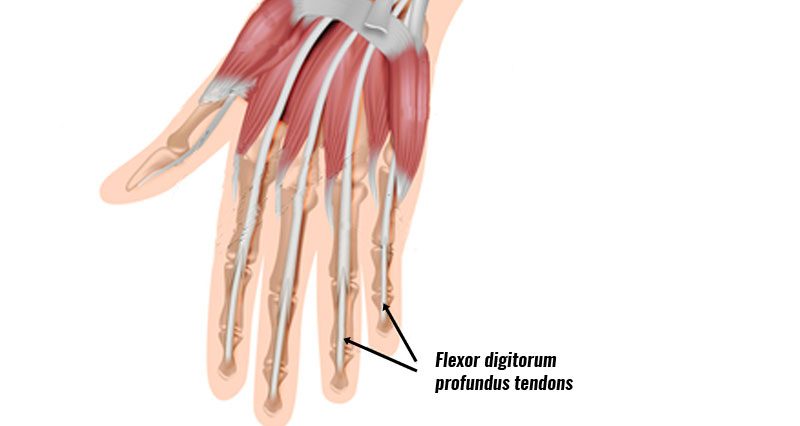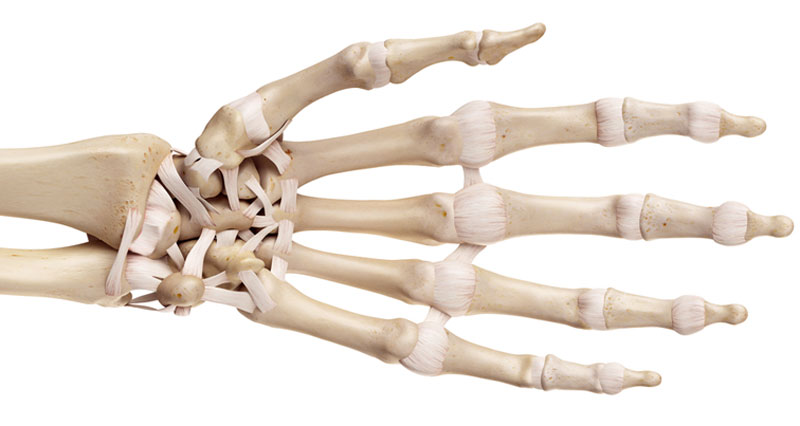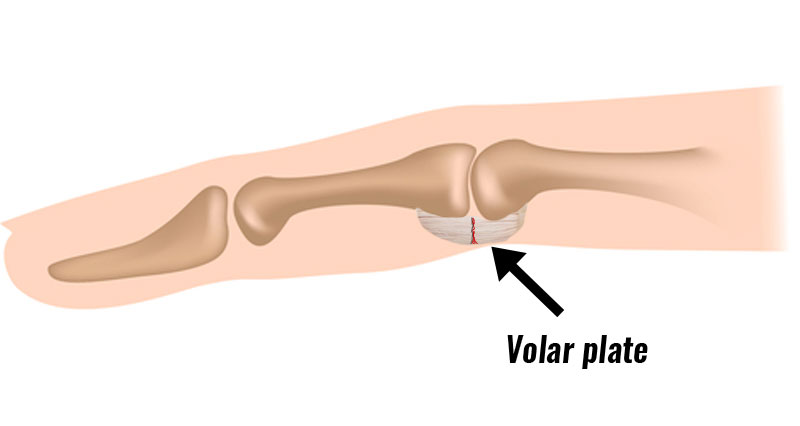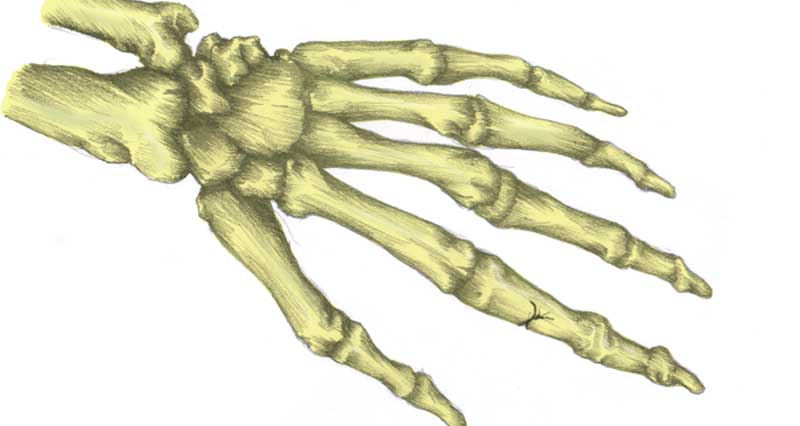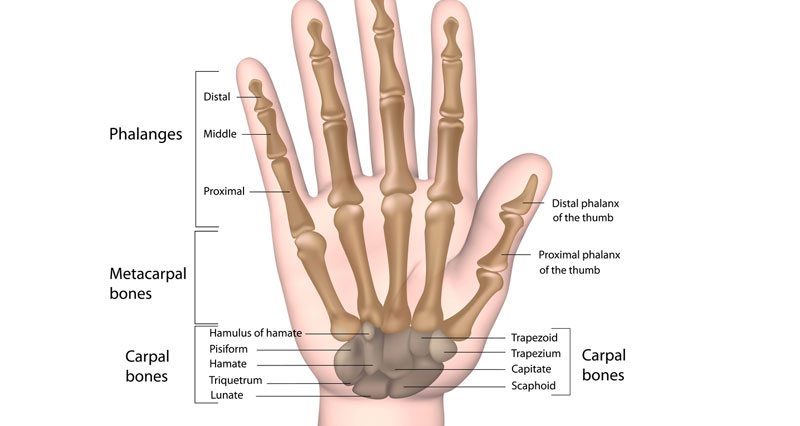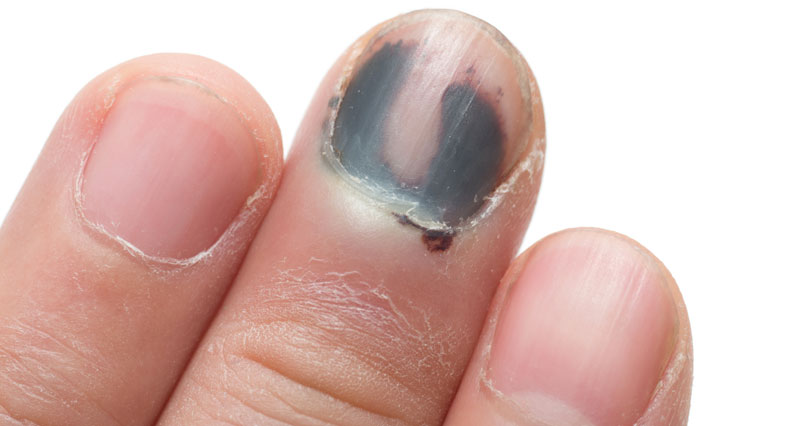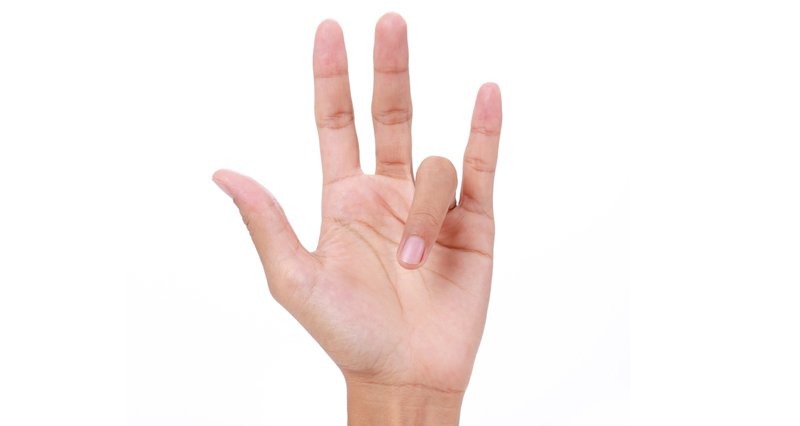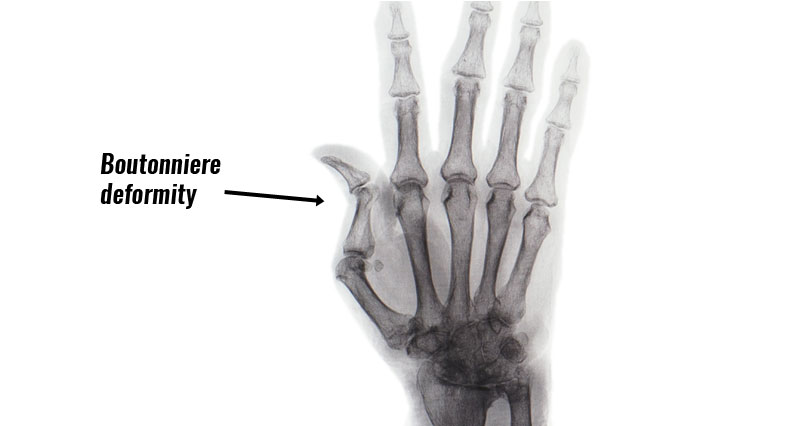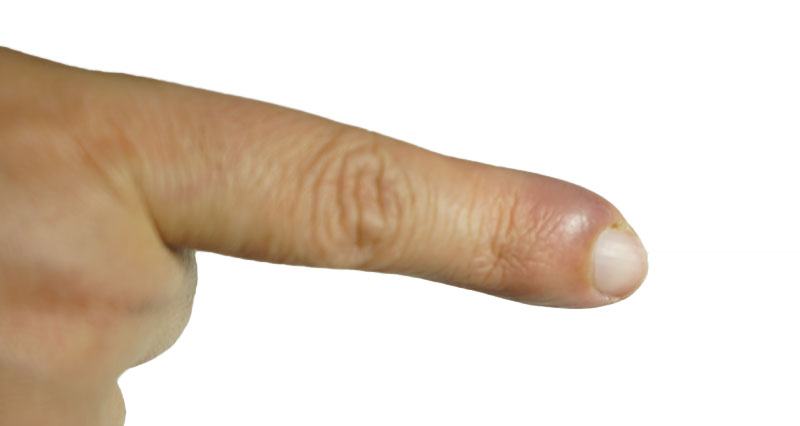Jersey finger is a tear of one of the flexor tendons in the tip of the finger. It is common in contact sports, especially Rugby and American Football and results in the tendon bunching at the base of the finger.
Jersey finger symptoms
- Pain in the fingertip.
- Inability to bend the finger normally, although it can still be forced into a bent position.
- You may have felt a ‘snap’ at the time the injury occurred.
- Tenderness on the pad of the finger.
- Swelling and bruising may develop later in the fingertip.
- It may be possible to feel the tendon as a bunched up soft mass on the palm side of the hand.
What is Jersey finger?
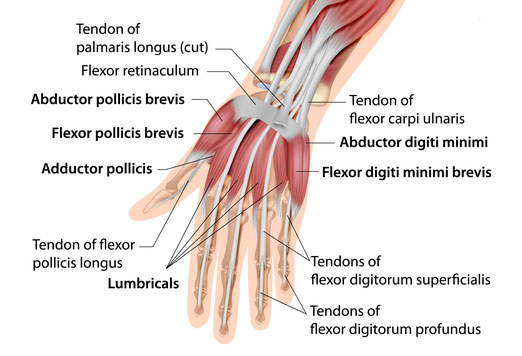
Jersey finger is the common name given to a tear, or avulsion strain, of one of the flexor tendons in the hand. There are four tendons of the Flexor Digitorum Profundus muscle which pass into each of the fingers. When the muscle contracts, it pulls on the tendons and enables your fingers to bend and grip things.
It usually occurs at the tip of your finger where the tendon attaches to the distal phalange (end bone of your finger). Often the tendon will tear, pulling a small piece of bone with it. This is known as an avulsion strain. The ruptured tendon may retract to the base of your finger or in your hand.
Causes
Jersey fingers most commonly occur in contact sports such as Rugby and American Football. It is called a Jersey finger because of how it occurs. Specifically, an opponents shirt with bent fingers whilst they attempt to wrestle themselves free. You are attempting to grip with your hand as hard as possible at the same time as your finger is being forced straight. Therefore, the tendon may tear due to the forces acting on it.
Treatment
If you have suffered a complete tear then surgery will be required to re-attach your tendon to the bone. It is important your tendon is re-attached as soon as possible and definitely within 10 days.
- Rest your finger. Apply ice or cold therapy to reduce pain and inflammation.
- If you cannot move your finger and it is stuck in an extended position, seek medical attention as soon as possible.
- You may need an X-rays or ultrasound scans to confirm the diagnosis and to check whether you have an avulsion fracture.
Surgery
- Surgery is usually needed to repair Jersey finger injuries.
- Your tendon must be reattached to the distal phalange as soon as possible.
- The rehabilitation of the condition is important as flexor tendons often become very stiff if you do not treat them properly.
Early movement after surgery is important to avoid stiffness. Strengthening exercises, for example, putty exercises and hand therapy balls may be recommended.
Wrist strengthening exercises
Putty Exercises (Various)
You can use putty to strengthen the small muscles of the wrist and hand. This is useful after injuries such as a fracture to any of the small bones in the hand or a wrist, thumb, or finger sprain.
- Grip in both hands and pull apart to work on wrist deviation strength
- You can hold it in one hand and twist it with the other to work on wrist extension
- You can squeeze the putty to improve grip strength
